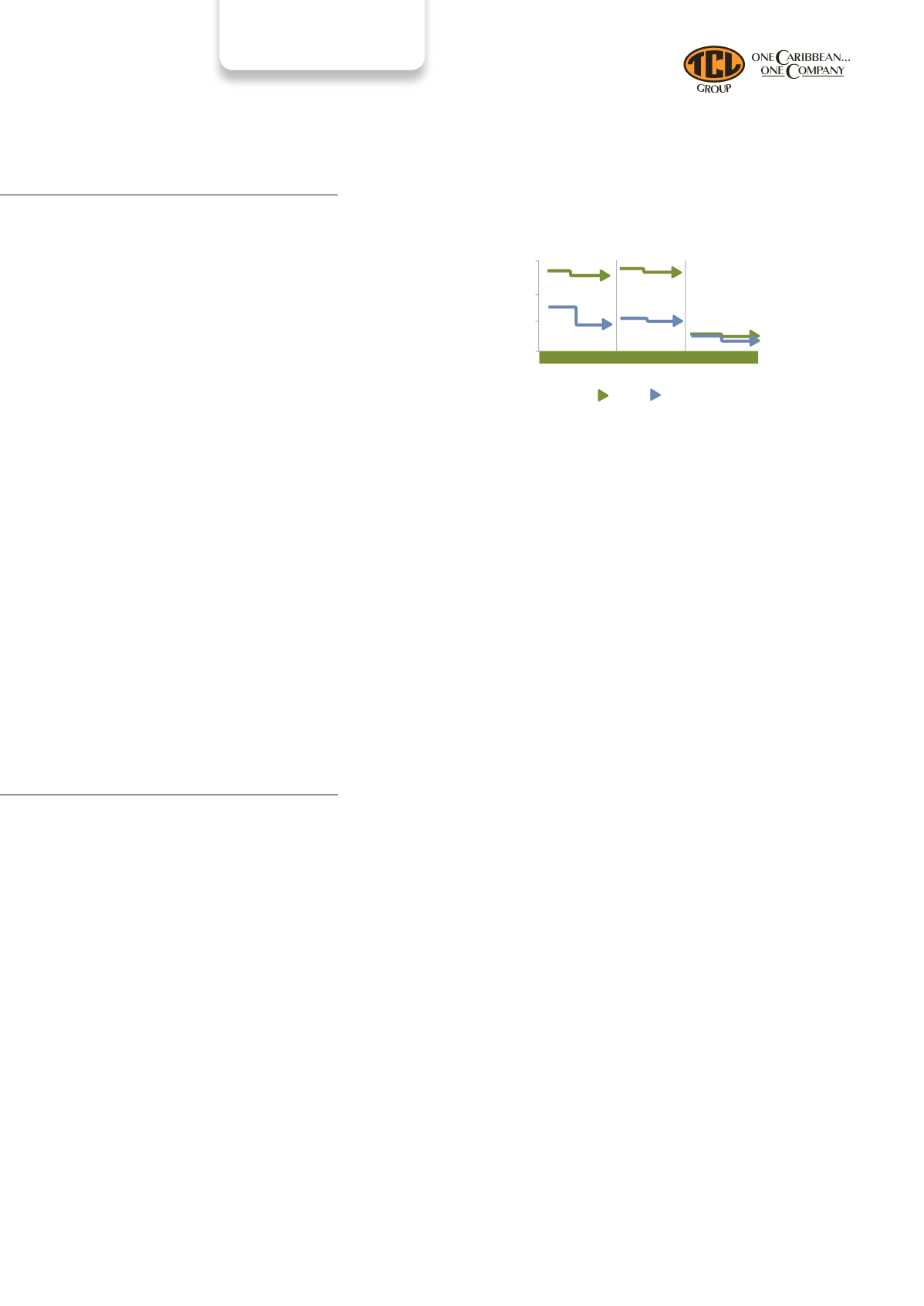
35
The Year in Review
Group CEO’s Report and Management Discussion 2012 (continued)
3.0 GROUP MARKETING
Cement Sales (‘000 MT)
Local
Export
2011 2012 2011 2012 2011 2012
600
400
200
0
TCL
CCCL
ACCL
535
292
512
180
553
217
536
204
110
112 70
98
As indicated, the Group’s domestic and export cement sales volumes fell by 4%
and 24% respectively compared to its performance for 2011. The respective plants’
comparative sales volumes for 2011 and 2012 are illustrated above.
In Jamaica, the economy slipped into stagnation once again with a 5% contraction in
the domestic cement market, where competition remained robust with imports from
the Dominican Republic and Florida, USA. However, CCCLwas still able to increase its
market share by pursuing several initiatives. Increased market share was achieved
notwithstanding the fact that two price increases were implemented, partially to
offset the effects of inflationary-induced cost items and the foreign exchange rate
depreciation of the Jamaican currency to the US dollar. CCCL was unable to take full
advantage of the opportunity it was given to cover the deficit in the Trinidad market
caused by the TCL strike. This was due to plant production challenges resulting
largely from the deferred plant maintenance/ cash constrained situation.
InTrinidad andTobago,thereweremajor supply and price disruptions in the domestic
market due to the 92-day strike by the representative Oilfields Workers’ Trade Union
from 27 February to 27 May, 2012. During the first month of the strike, cement
supplies were severely disrupted leading to retail prices of over TT$100 per bag at
some locations; however the average pricewas between $60.00 and $69.00 per bag.
Gradually, TCL managed to bring the supply situation under control by ramping up
imports from CCCL, CEMEX and ACCL, re-starting the cement mill and establishing
access for bulk customers. Under strike conditions, 45,600 MT of cement were
imported to satisfy the local demand. The main drivers of demand in the local
market were Government’s infrastructural projects, housing projects, pre-Tobago
House of Assembly election projects and homeowner projects. However, the strike
itself would have influenced some decision-makers to defer certain construction
projects. TCL implemented an 8.5% increase in the price of cement at the beginning
of the year and during the strike, a surcharge on cement prices was implemented to
cover additional charges incurred due to importation. This surcharge was reversed
on 1 August, 2012, which represented a reduction in the price by 28%.
Likewise, export sales were adversely impacted (38% below 2011 volume) by
unavailability of product during and just after the strike action, the damage to the
transport system to Line 2 in the packing plant, and space restrictions on Brazil-
bound vessels.
The Barbados economy recorded real GDP growth of 0.4% in 2012 as it continued to
be negatively affected by the lingering effects of the global financial crisis, reflecting
an 11% decrease in local sales volume compared to 2011. Additionally, the lack of


